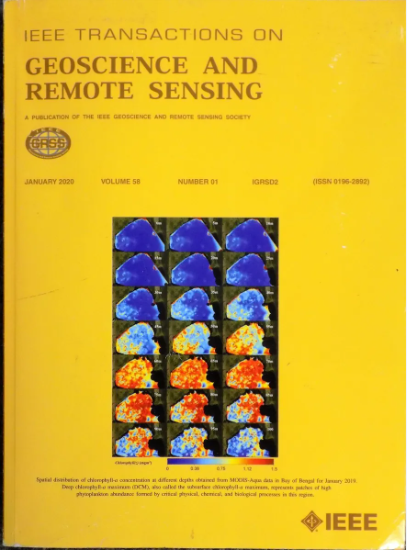Using Multisource Data and Time Series Features to Construct a Global Terrestrial CO₂ Coverage by Deep Learning
IF 8.6
1区 地球科学
Q1 ENGINEERING, ELECTRICAL & ELECTRONIC
IEEE Transactions on Geoscience and Remote Sensing
Pub Date : 2024-09-17
DOI:10.1109/TGRS.2024.3462589
引用次数: 0
Abstract
Carbon dioxide (CO2) is the most important atmospheric contributor for global warming. Satellite remote sensing is a commonly used method for high-precision CO2 detection, but it often suffers from striping issues, which hinders its ability to achieve full coverage. Therefore, the limited availability of data poses challenges for global carbon accounting. In this article, we generate a global seamless and high-resolution dataset of column-averaged dry air CO2 mole fractions (XCO2) from 2017 to 2020 by integrating multiple data sources using deep learning techniques feedforward neural network (FNN). The data sources primarily include satellite, ground-based, and reanalysis XCO2 products, satellite vegetation index data, and meteorological data. The spatial resolution of the dataset is 0.1°, and the temporal resolution is one day. Moreover, this article also investigated the importance of features in deep learning models and examined the spatiotemporal variations of global XCO2. The results demonstrate that the FNN approach with time series features yields an improved dataset (利用多源数据和时间序列特征,通过深度学习构建全球陆地二氧化碳覆盖范围
二氧化碳(CO2)是造成全球变暖的最重要大气成分。卫星遥感是一种常用的高精度二氧化碳探测方法,但它经常受到条带问题的困扰,这阻碍了其实现全面覆盖的能力。因此,数据的有限性给全球碳核算带来了挑战。在本文中,我们利用深度学习技术前馈神经网络(FNN),通过整合多种数据源,生成了 2017 年至 2020 年全球无缝、高分辨率的柱均干空气二氧化碳摩尔分数(XCO2)数据集。数据源主要包括卫星、地面和再分析 XCO2 产品、卫星植被指数数据和气象数据。数据集的空间分辨率为 0.1°,时间分辨率为一天。此外,本文还研究了深度学习模型中特征的重要性,并考察了全球 XCO2 的时空变化。结果表明,与其他方法相比,带有时间序列特征的 FNN 方法产生了更好的数据集(${R} =0.98$ 和 RMSE =0.82 ppm)。在 FNN 中,已知模型数据 [Carbon Tracker (CT) XCO2] 被视为最重要的特征。我们发现,从 2017 年到 2020 年,全球 XCO2 增加了约 7.5 ppm。这一无缝、精细的数据集为了解全球碳循环和制定碳减排政策提供了宝贵的支持。
本文章由计算机程序翻译,如有差异,请以英文原文为准。
求助全文
约1分钟内获得全文
求助全文
来源期刊

IEEE Transactions on Geoscience and Remote Sensing
工程技术-地球化学与地球物理
CiteScore
11.50
自引率
28.00%
发文量
1912
审稿时长
4.0 months
期刊介绍:
IEEE Transactions on Geoscience and Remote Sensing (TGRS) is a monthly publication that focuses on the theory, concepts, and techniques of science and engineering as applied to sensing the land, oceans, atmosphere, and space; and the processing, interpretation, and dissemination of this information.
 求助内容:
求助内容: 应助结果提醒方式:
应助结果提醒方式:


